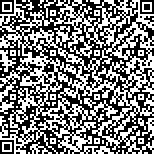本文已被:浏览 834次 下载 536次
Received:July 28, 2020 Published Online:March 20, 2021
Received:July 28, 2020 Published Online:March 20, 2021
中文摘要: 目的 探讨第一代抗表皮生长因子受体(EGFR)靶向药物对驱动基因阳性的非小细胞肺癌(NSCLC)临床疗效及对癌胚抗原(CEA)、神经元特异性烯醇化酶(NSE)、细胞角蛋白19片段(CY211)的影响。方法 选取2017年1月至2019年4月合肥市第三人民医院112例驱动基因阳性的NSCLC患者,采用随机数字表法分为4组,各28例。4组均给予吉西他滨联合顺铂化疗,于此基础上,埃克替尼组采取埃克替尼,国产吉非替尼组采取国产吉非替尼,进口吉非替尼组采取进口吉非替尼,厄洛替尼组采取厄洛替尼。治疗3个月后,比较4组治疗总有效率、疾病控制率、不良反应发生情况、血清CEA、NSE、CY211、血管内皮生长因子(VEGF)、碱性成纤维细胞生长因子(bFGF)、促血管生成素2(Ang-2)水平;随访12个月,统计4组生存率及无进展生存期。结果 治疗3个月评价,4组治疗总有效率、疾病控制率比较,差异无统计学意义(P>0.05);4组治疗3个月后血清CEA、NSE、CY211水平和血清VEGF、bFGF、Ang-2水平均低于治疗前(P<0.05);4组Ⅰ~Ⅱ级皮疹发生率差异有统计学意义,以厄洛替尼组为高(P<0.05),4组其他不良反应发生率对比,差异无统计学意义(P>0.05);随访12个月,埃克替尼组、国产吉非替尼组、进口吉非替尼组和尼洛替尼组完成随访患者的生存率(77.78%、67.86%、74.07%、69.23%)、无进展生存期对比,差异无统计学意义(P>0.05);4组治疗方案成本-效果分析比较,差异无统计学意义(P>0.05)。结论 采用第一代抗EGFR靶向药物治疗驱动基因阳性的NSCLC患者,均能取得良好疗效,显著下调患者血清CEA、NSE、CY211水平,有效抑制新血管生成,提高患者1年生存率,延长无进展生存期,其中采用厄洛替尼治疗的成本-效果较好,但存在皮疹发生率高的不足,可根据患者实际情况选取合适药物。
中文关键词: 非小细胞肺癌 驱动基因阳性 第一代抗EGFR靶向药物 癌胚抗原 神经元特异性烯醇化酶 细胞角蛋白19片段
Abstract:Objective To explore the effects of the first generation of anti-epidermal growth factor receptor (EGFR) targeted drugs on the clinical efficacy of driver gene-positive non-small cell lung cancer (NSCLC) and on carcinoembryonic antigen (CEA),neuron-specific enolase (NSE),and cytokeratin 19 fragment (CY211). Methods From January 2017 to April 2019,112 patients with driver gene-positive NSCLC were treated and randomly divided into 4 groups (n=28,each).Based on gemcitabine combined with cisplatin chemotherapy performed in four groups,icotinib,domestic gefitinib,imported gefitinib and erlotinib were respectively given in icotinib group,domestic gefitinib group,imported gefitinib group and erlotinib group.After 3 months of treatment,the total efficiency,disease control rate,incidence of adverse reactions,serum levels of CEA,NSE,CY211,vascular endothelial growth factor (VEGF),basic fibroblast growth factor (bFGF) and angiopoietin 2 (Ang-2) were compared among 4 groups.All patients were followed up for 12 months,and the survival rate and progression-free survival were recorded. Results Three months after treatment,there were no significant differences in the total efficiency and disease control rate among four groups (P>0.05).Compared with those before treatment,the levels of CEA,NSE,CY211,VEGF,bFGF and Ang-2 decreased significantly after treatment in 4 groups(P<0.05).There was significant difference in the incidence of grade Ⅰ-Ⅱ rash among four groups,with the highest in erlotinib group (P<0.05),but there was no significant difference in the incidence of other adverse reactions among 4 groups (P>0.05).After 12 months of follow-up,the survival rates were respectively 77.78% in icotinib group,67.86% in domestic gefitinib group,74.07% in imported gefitinib group and 69.23% in erlotinib group(P>0.05).There were no significant differences in progression free survival and in cost-effectiveness analysis among four groups (all P>0.05). Conclusion In the treatment of NSCLC patients with positive driver genes,the first generation of anti-EGFR targeted drugs can achieve good curative effect,reduce the serum levels of CEA,NSE and CY211 significantly,inhibit the formation of new blood vessels effectively,improve the 1-year survival rate of patients and prolong the progression-free survival period.The cost-effectiveness of erlotinib is better,but there is a higher incidence of rash in the patient using it.The appropriate drug can be selected according to the actual situation of patient.
keywords: Non-small cell lung cancer Positive driver gene First-generation anti-EGFR targeted drug Carcinoembryonic antigen Neuron-specific enolase Cytokeratin 19 fragment
文章编号: 中图分类号: 文献标志码:A
基金项目:安徽省自然科学基金(1708085MH162)
| Author Name | Affiliation |
| GAO Jin-suo,WANG Jian-bing,LIU Wei-wei | Department of Oncology and Hematology,the Third People′s Hospital of Hefei,Hefei,Anhui 230022,China |
| Author Name | Affiliation |
| GAO Jin-suo,WANG Jian-bing,LIU Wei-wei | Department of Oncology and Hematology,the Third People′s Hospital of Hefei,Hefei,Anhui 230022,China |
引用文本:
